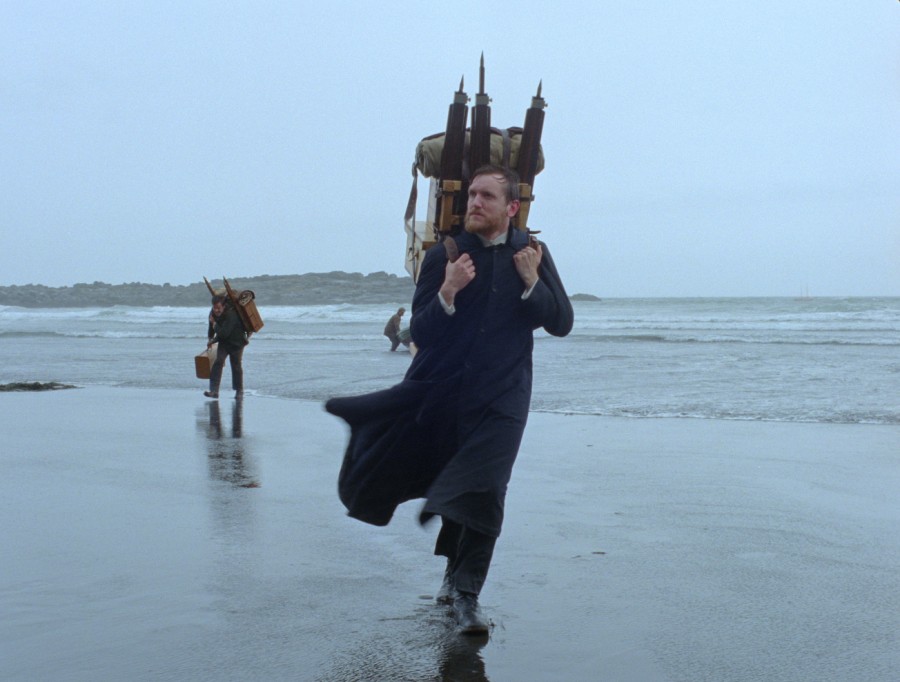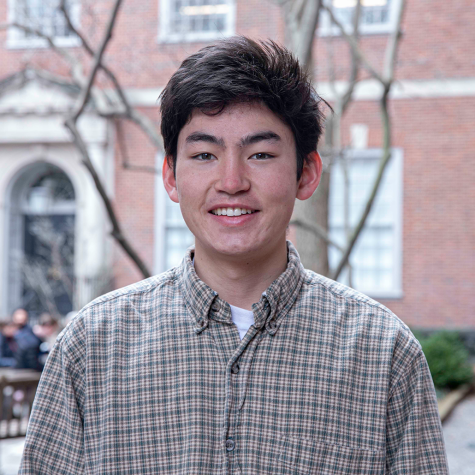Review: ‘Godland’ shows faith at the ends of the earth
In Hlynur Pálmason’s accomplished third feature film, a Danish priest succumbs to a bitter existential crisis in the badlands of coastal Iceland. “Godland” is currently playing at the IFC Center.
February 8, 2023
In the periphery of “Godland,” director Hlynur Pálmason’s visually breathtaking third feature film, a six-foot wooden cross struggles to maintain its place among cargo that is being transported across the barren landscape of Iceland. Cold, teary-eyed and riding on horseback, the movers — chief among them Lucas (Elliott Crosset Hove), a scrawny Danish priest tasked with erecting a church in a remote corner of the country — have a lot to carry, and it comes as no surprise when the cross gets left behind. This dramatic albeit predictable fate is forecast by Lucas’ husky native guide Ragnar (a strikingly authentic Ingvar Sigurðsson), when he advises the priest to “saw it down” at the outset of their trek.
Pálmason’s film highlights the tense colonial relationship between Denmark and Iceland in the 19th century, and begs the questions — what is truly worth carrying across a land that is ruled by those hostile to your presence? Lucas is a man of strong faith but weak body, and his mental state slowly deteriorates as his journey goes on. Despite his initial excitement at being selected to establish his own church, Lucas quickly realizes that his task will be incredibly daunting. In an arresting early scene, he collapses to the sand after a long, seafaring journey and stares out at the land in front of him.
Captured by cinematographer Maria von Hausswolff, whose work seems closer at times to that of a landscape painter than that of a cinematographer, the land that Lucas travels across seems truly otherworldly. It is truly a testament to the natural majesty of Iceland. Through the rounded corners of an Academy aspect ratio, Pálmason’s vision of 19th century Iceland oscillates between dream and nightmare. Both are equally beautiful.
A spotless white valley hides rotting animal carcasses beneath snow; an overflowing river is a sign of the decaying ice bluffs that cover the mountains ahead, which Lucas and his team struggle to traverse. The priest is both struck by the land’s beauty and terrified by the ease with which it subjugates him — the very thing that he, on behalf of Denmark, has set out to do. This same terror sticks with you long after the movie is over, especially if you’re stepping into an East Coast cold front through the theater doors.
In the first half, “Godland” is a travel movie. But in the second half, the tense relationships between Lucas’ party and the few inhabitants of the coastal community in which they plan to construct the church begin to unfold. Weakened by his journey, Lucas makes awkward attempts to evangelize residents of the town, oversees the delayed construction of his chapel, and enters into a curious courtship triangle between fellow Danish transplant Anna (Vic Carmen Sonne) and her charismatic, anti-imperialist father, Carl (Jacob Hauberg Lohmann). Here, a stable sense of time materializes for the first time in the film, subduing what has otherwise been an otherworldly adventure into a more settled drama with less of a grand tone.
The second half certainly brings some welcome elements to the film, namely a unique sense of humor found in the contrast between Lucas’ peaceful, quiet nature and the roughness of the people and countryside of Iceland. But Lucas’ journey to conquer his surroundings in the name of his faith and survival doesn’t bring the same novelty that makes the first half soar. While Lucas remains a man to root for, the process of his hardening seems to lack the runtime or narrative dynamism necessary for making his journey feel totally complete.
Nonetheless, even in and around the church and its settlement, the Old Testament spirit of “Godland” prevails. As Lucas’ journey grows increasingly mystical, the film retains its hypnotic effect. Unfortunately, “Godland” fails to make the people in Lucas’ new life seem as compelling as his natural surroundings. Still, the visual experience remains something to marvel at, with the pitted canyons, the rocky beaches, the stony sky and the rolling grasses that disappear beneath ice as the winter drags on. One wishes the grandeur of the setting — and the situation in which Lucas finds himself — had a narrative to match.
Throughout the entire 143 minutes of “Godland,” there’s a palpable feeling of hostility, expertly crafted by Pálmason. It gives tone to resistance against the lingering Scandinavian colonial projects of the late 19th century that don’t figure prominently in our historical imaginations. Maybe we don’t remember these stories because their protagonists got lost along the way, or maybe they were changed so much by their adventures that they failed to record them accurately. When you watch Lucas’ grim passage, you think of how many stories have been lost to time, to cold, to madness — and you’re glad it isn’t you who’s out there.
Contact JP Pak at [email protected].




























































































































































